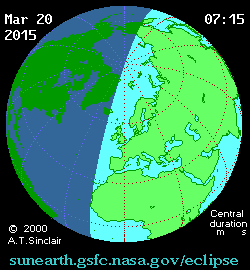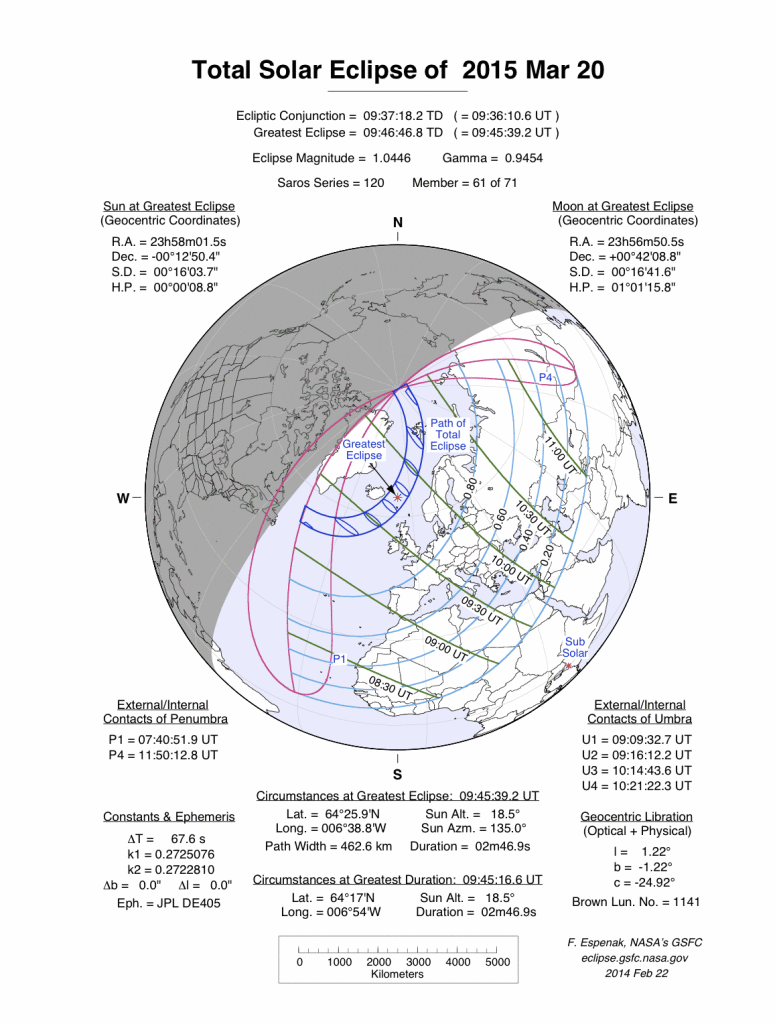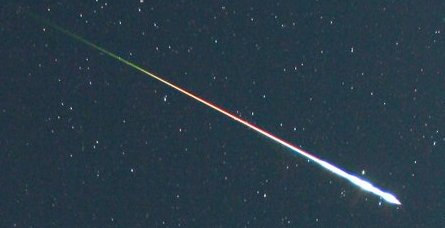Posts Tagged ‘nasa’
Partial Solar Eclipse 2015
This year we will see our first solar eclipse since 1999. The eclipse on Friday 20th March will not be a total eclipse though, with only about 84% of the Sun being covered by the Moon, here in Plymouth, UK. You would have to be in the north of the country to get closer to a total eclipse, but even then it will only be about 94%. To get the best eclipse, you would have to be situated in northern Europe and the Arctic. The partial eclipse in Plymouth will start at approx 8:20 am and will reach its maximum at about 9:25 am, with the event completing at about 10:25, when the Moon again clears the Sun.
The below animation from NASA, shows how the Moon’s shadow will fall over the Earth during the eclipse.
Here is a map put together by NASA to show the partial and total eclipse of the Sun across the World.
Hopefully it will be a clear day in Plymouth, and the spectacle will be great to watch (if those of you who work are allowed out of the office briefly to take a look!). I will certainly be going outside to take a look as the eclipse in 1999 was on a cloudy day, so the Sun wasn’t visible at all. The only way you could tell that it was happening was because it got dark! I am really hoping that this year, the eclipse will be viewable, and not have to rely on the day getting darker to know that it is happening. The next eclipse will be in 2026, so if you miss this one, then you will have to wait for several years to try again!
I do still need to get some eclipse glasses, as don’t have any of those. Remember, if you want to view the eclipse as best you can, you need to make sure you use the correct equipment, otherwise it can be very dangerous to your eyes!
If you have any comments on the eclipse in Plymouth, please tweet me at @strethewey or leave a comment on this post. If you have any photos, please also tweet me and I will be happy to post them on this blog.
Enjoy the eclipse! 😉
Asteroid 2012 DA14
On February 15th 2013, an Asteroid will be passing by Earth closer to us than the Moon is to our planet and closer to us than some satellites that we have orbiting us. There was a time when some scientists thought that the Asteroid would hit Earth, but they now believe it will miss us (thank goodness!), and will travel pass us at about 17,200 miles away. This is still pretty close and may possibly allow us, if it is a clear day and night, to view the Asteroid at some point. Those of us with access to good binoculars and telescopes should have a good view if the skies are clear.
To put the distance that Asteroid 2012 DA14 will swing by us in context, the Moon is 240,000 miles away and geosynchronous satellites are about 26,000 miles away. So the Asteroid will travel approx 9,000 miles closer to us than these satellites. The Asteroid itself is a small one compared to most others and is about 45m across with a mass of about 130,000 metric tons, but would still have caused some damage if it actually hit us!
NASA have released a statement regarding the Asteroid with a few more tidbits of information,
‘On [February 15, 2013], the asteroid will travel rapidly from the southern evening sky into the northern morning sky with its closest Earth approach occurring about 19:26 UTC when it will achieve a magnitude of less than seven, which is somewhat fainter than naked eye visibility. About 4 minutes after its Earth close approach, there is a good chance it will pass into the Earth’s shadow for about 18 minutes or so before reappearing from the eclipse. When traveling rapidly into the northern morning sky, 2012 DA14 will quickly fade in brightness.‘
The International Space Station and Perseid Meteors
During the month of August the ISS (International Space Station) could be seen in the sky during most evenings. The first time that I saw it was on Sunday 21st August when my family and I were on holiday in Weymouth. I wasn’t sure what to expect really as I didn’t know how bright it was going to be and how easily it could be made out from the rest of the stars in the sky. I had a NASA app on my phone which gave the general direction of where the ISS would be coming from and the length of time it would be viewable in the sky, but I was still worried that I wouldn’t see it.
Whilst on the look out, I was scanning the sky generally for constellations and satellites and to my amazement saw the best two shooting stars I had ever seen in my life. These were obviously not actual shooting stars but were two meteors from the Perseid Meteor Shower. This was especially great as the height of the meteor shower was a couple of weeks before, so these would have come from the tail end of the passing shower and were totally unexpected. They were so bright and the trails in the sky were long and wide. It was brilliant to see and completely lucky that I was looking at that area of the sky at the right time. I knew these were part of the Perseids as their general direction originated from towards the constellation Perseus, and from my position, they shot past in front of Cassiopeia as well.
The image below is the best image I can find that shows almost exactly what I saw in the sky.
Not long after, I suddenly spotted a very bright light in the sky coming from the direction where the ISS was meant to originate from. The object was moving as well which meant that what I was seeing was the ISS, and it was bang on time (the app gives the time of when the ISS becomes visible in the sky). Where I was watching was in the direct path of the ISS, so it flew directly over the top of me which was great to see! Looking at it you could just make out the solar panels and the general shape which made it an amazing sight. It lasted for about 4 minutes before it passed by and faded to black as it moved away from the sun (which was reflecting off the panels which is why it was visible in the sky). After seeing this, I was out most evenings when the sky was clear to view the International Space Station pass overhead, and I would recommend the viewing to anyone as it is a great thing to experience and puts a lot of things into perspective. Unfortunately, now we are in mid-September, the ISS has moved out of viewable range in the evenings although it can be seen for a fleeting moment during the early hours of the morning on occasions.
The sighting of the International Space Station also cleared up a little mystery from earlier in the year when I was out at Mount Batten in Plymouth and saw a very bright object move across the sky at a fairly brisk pace. At the time I wasn’t sure what it was and thought it may have actually been a UFO, but after seeing the ISS during the Summer, I can now say that what I saw in March was the ISS travelling across the sky above us. Am glad this has been cleared up although it would have been nice if it was a UFO! 😉



